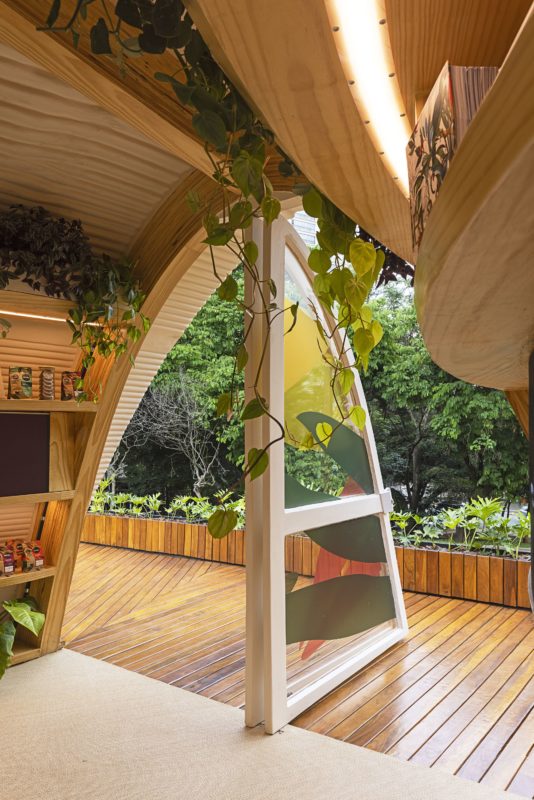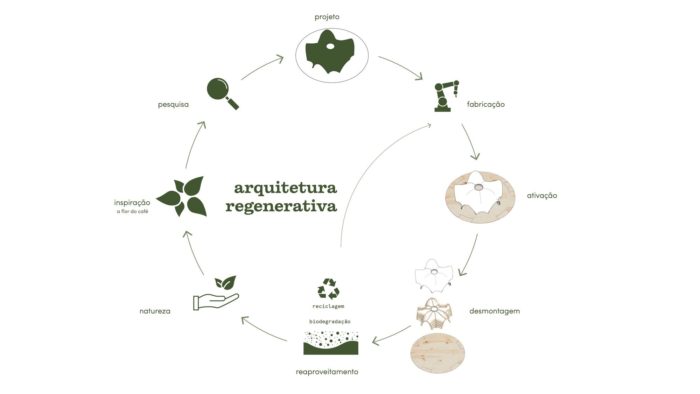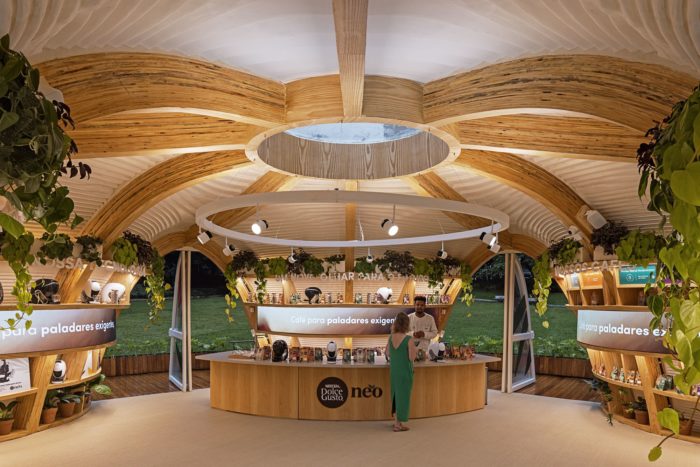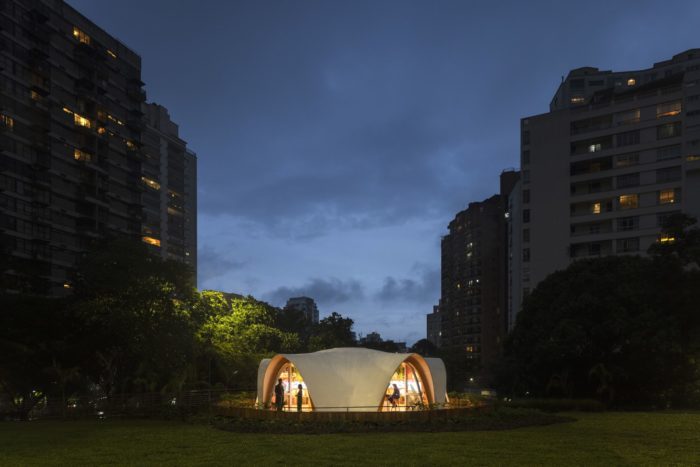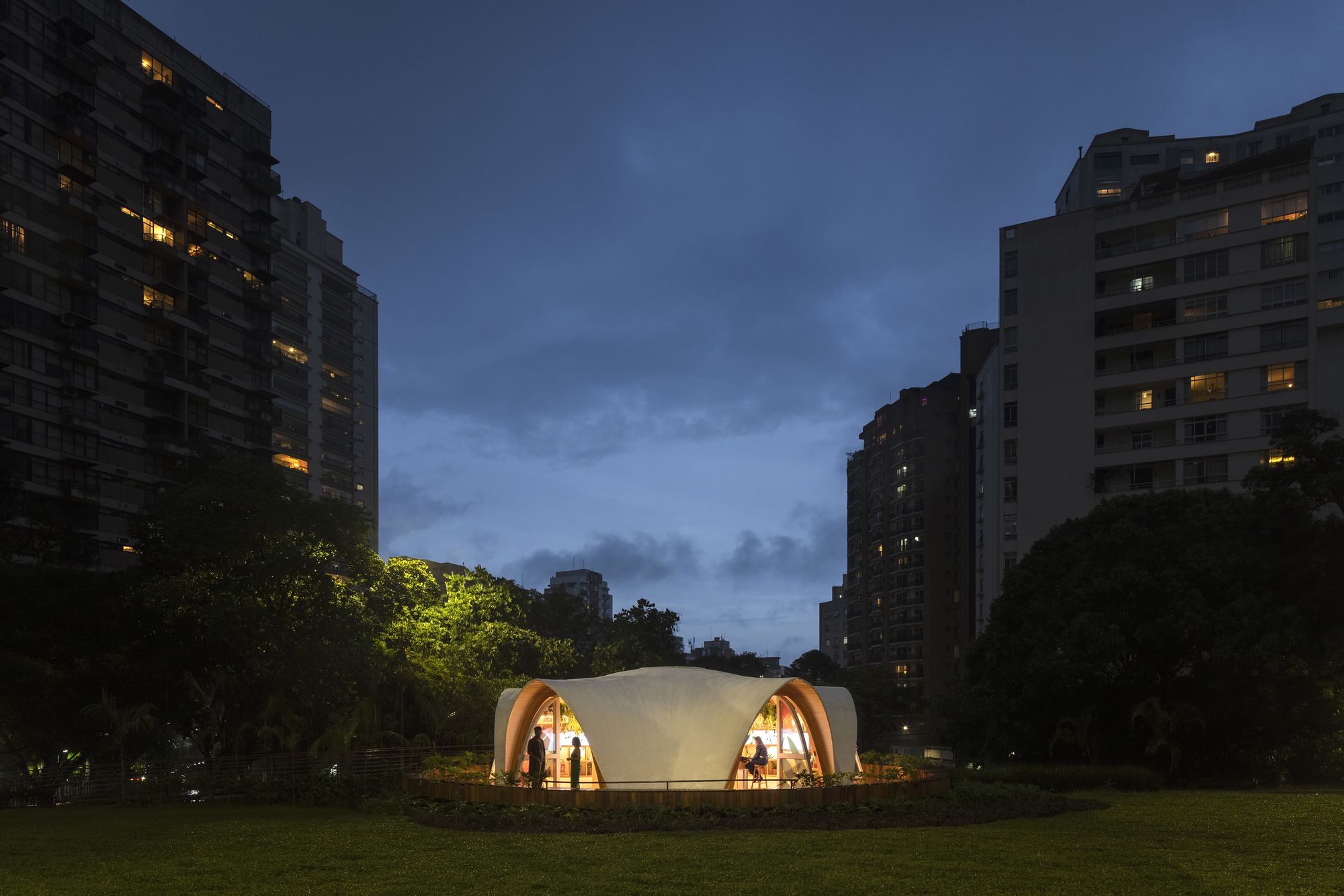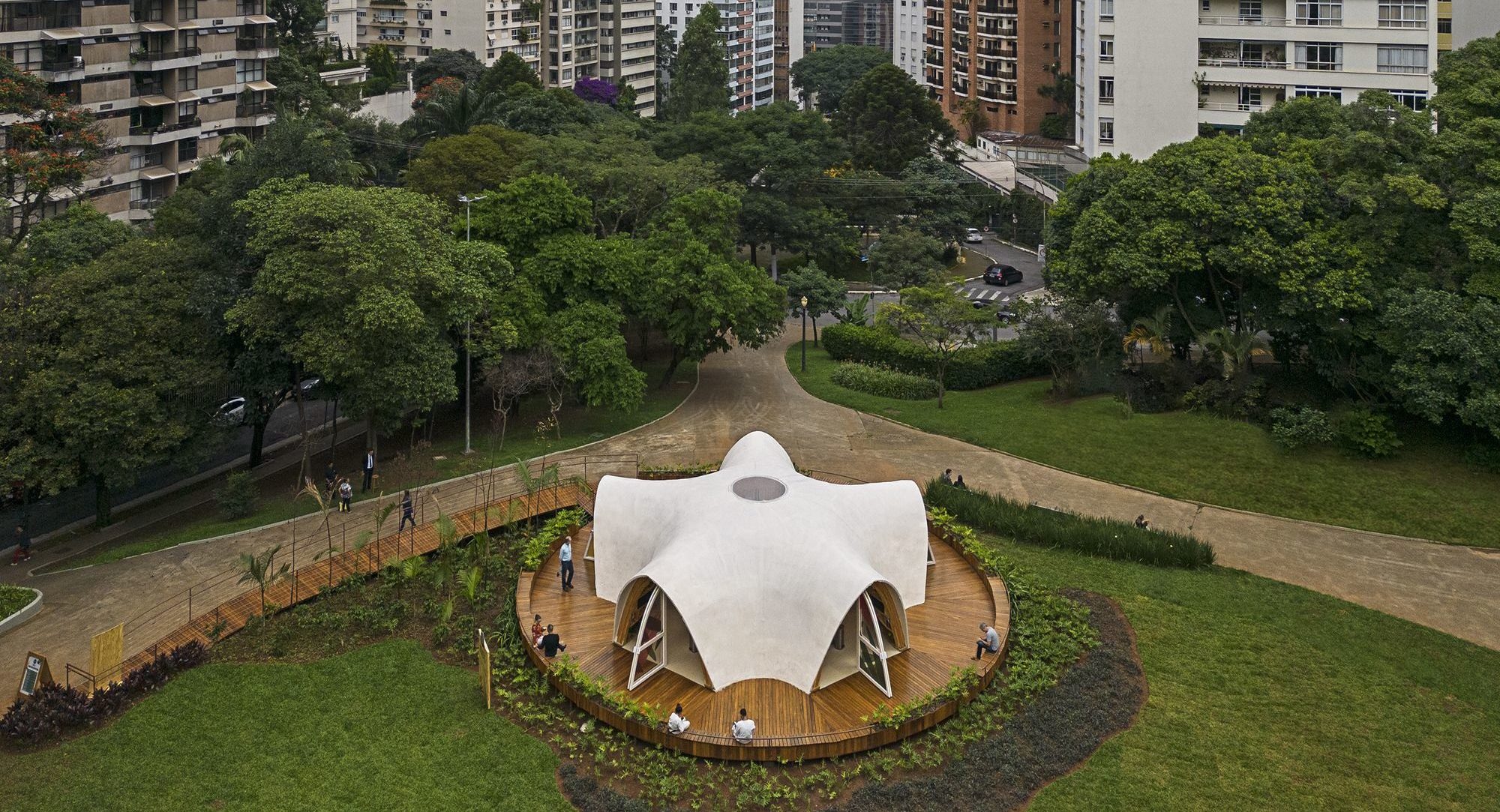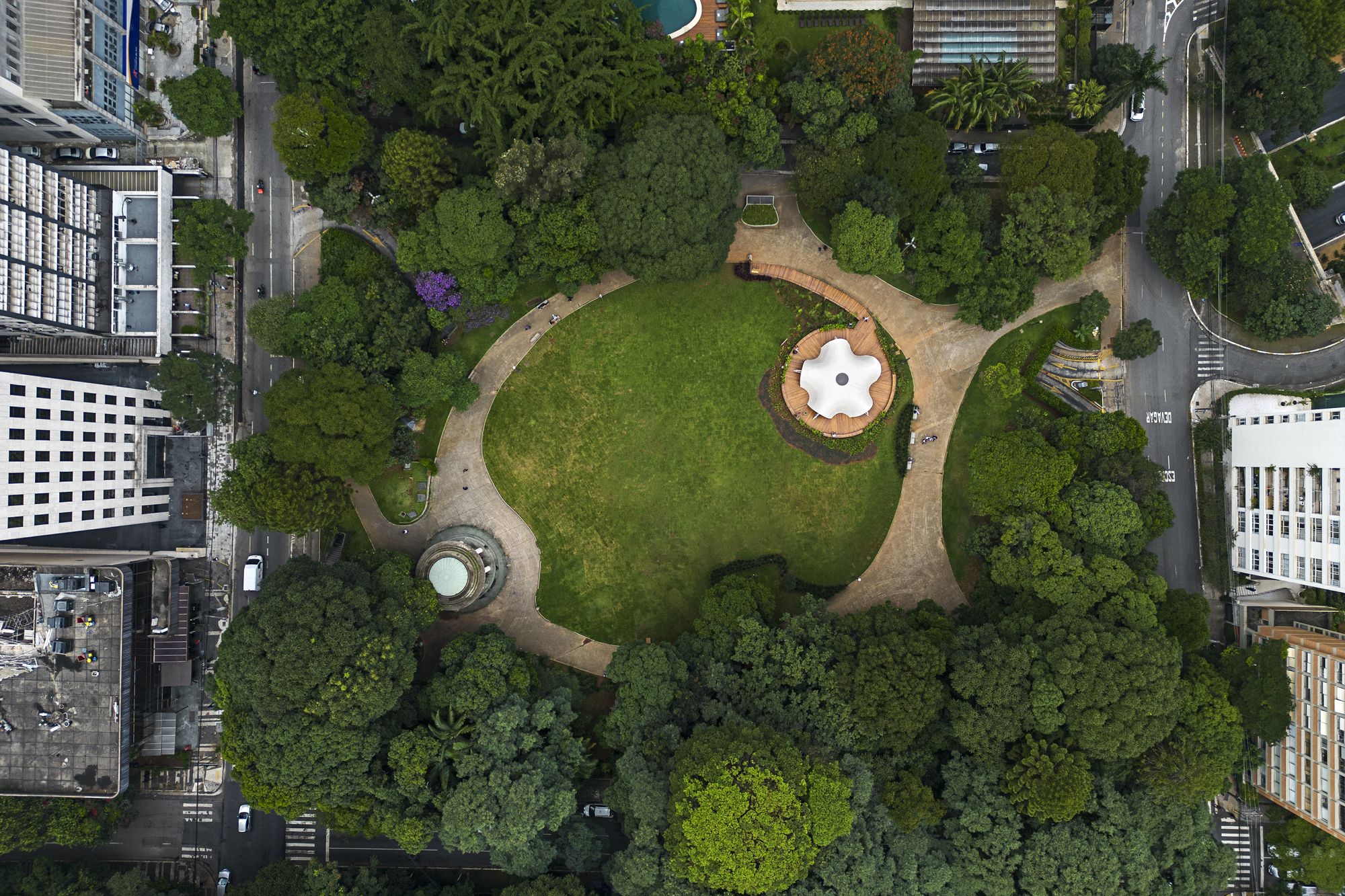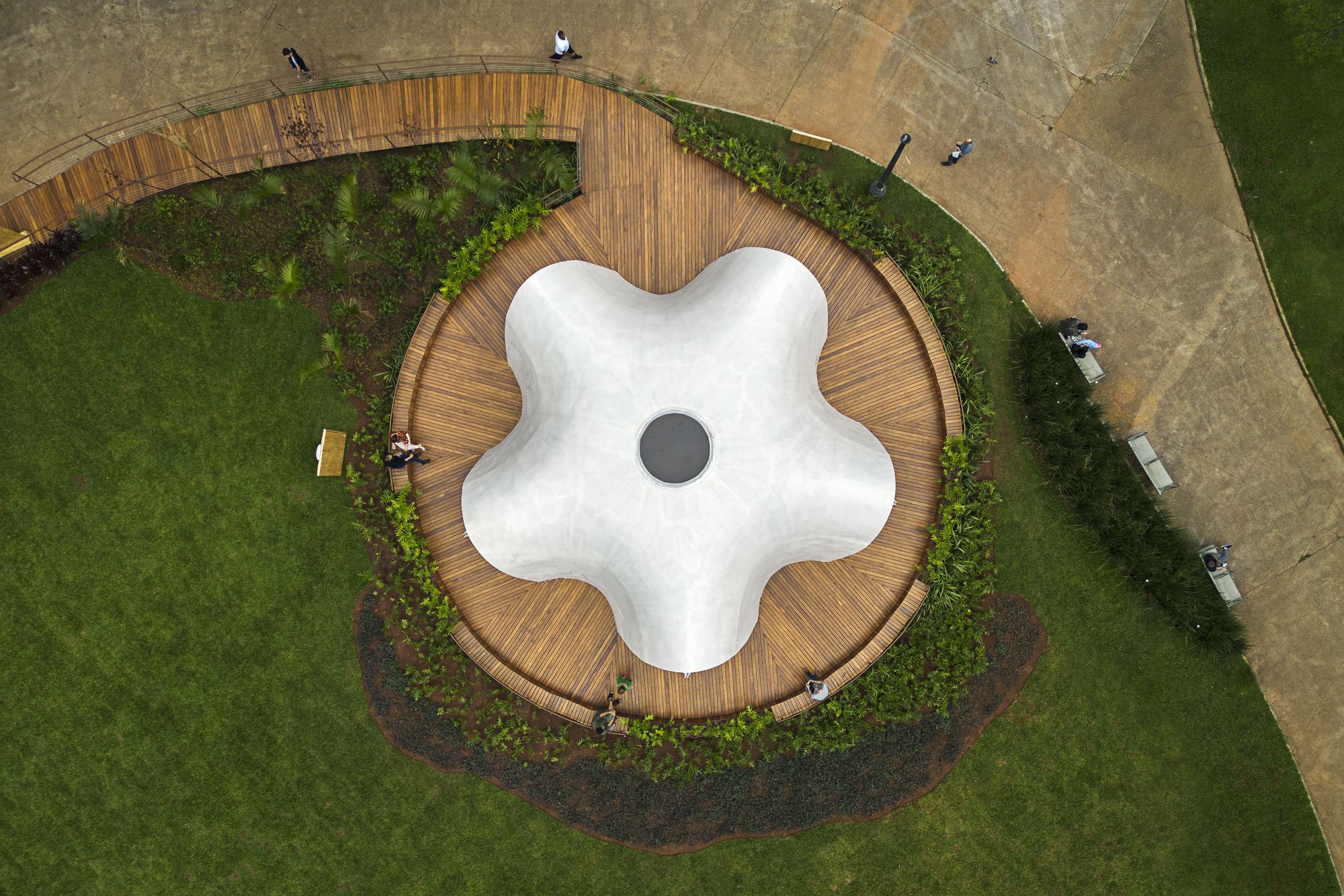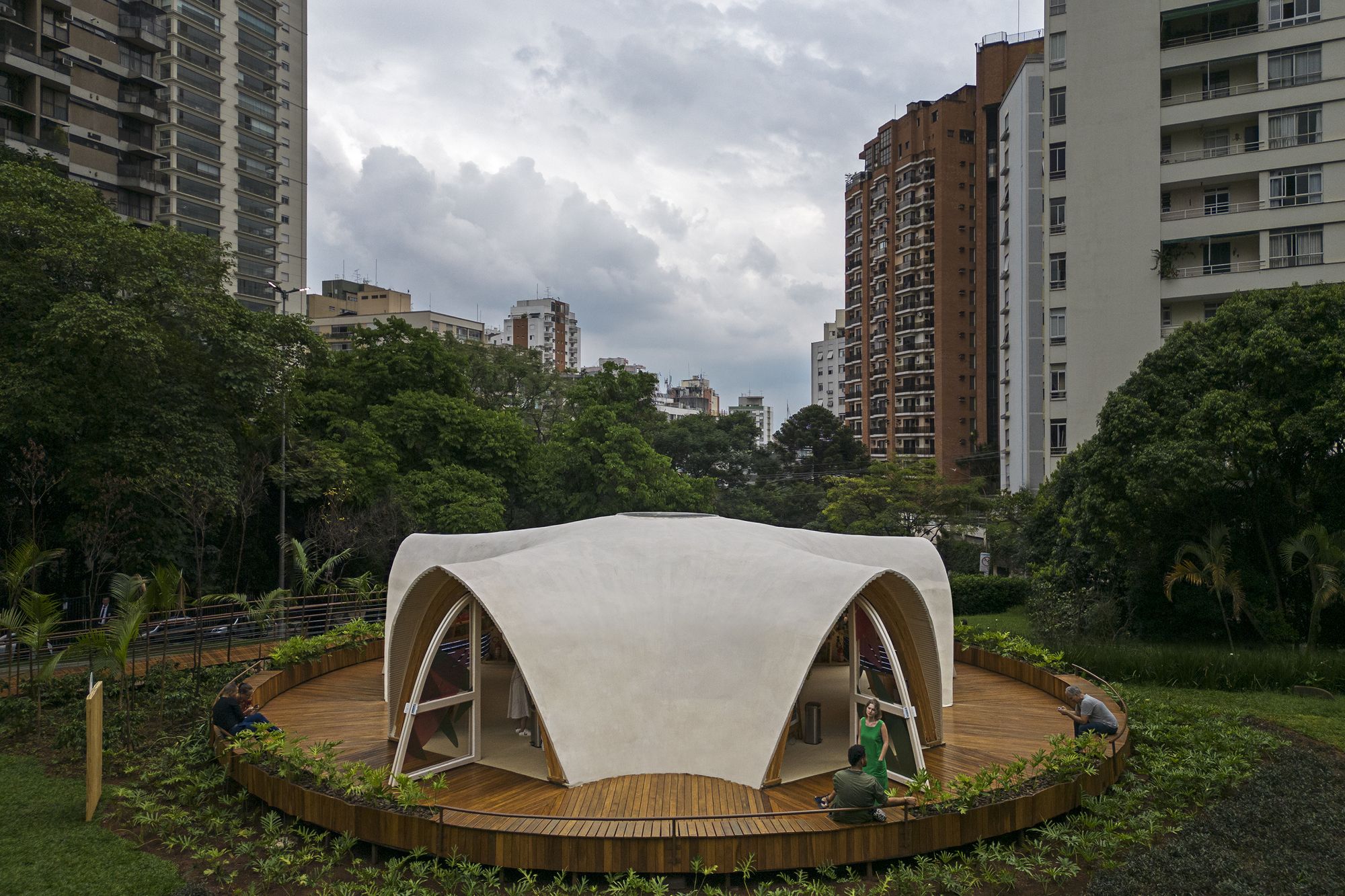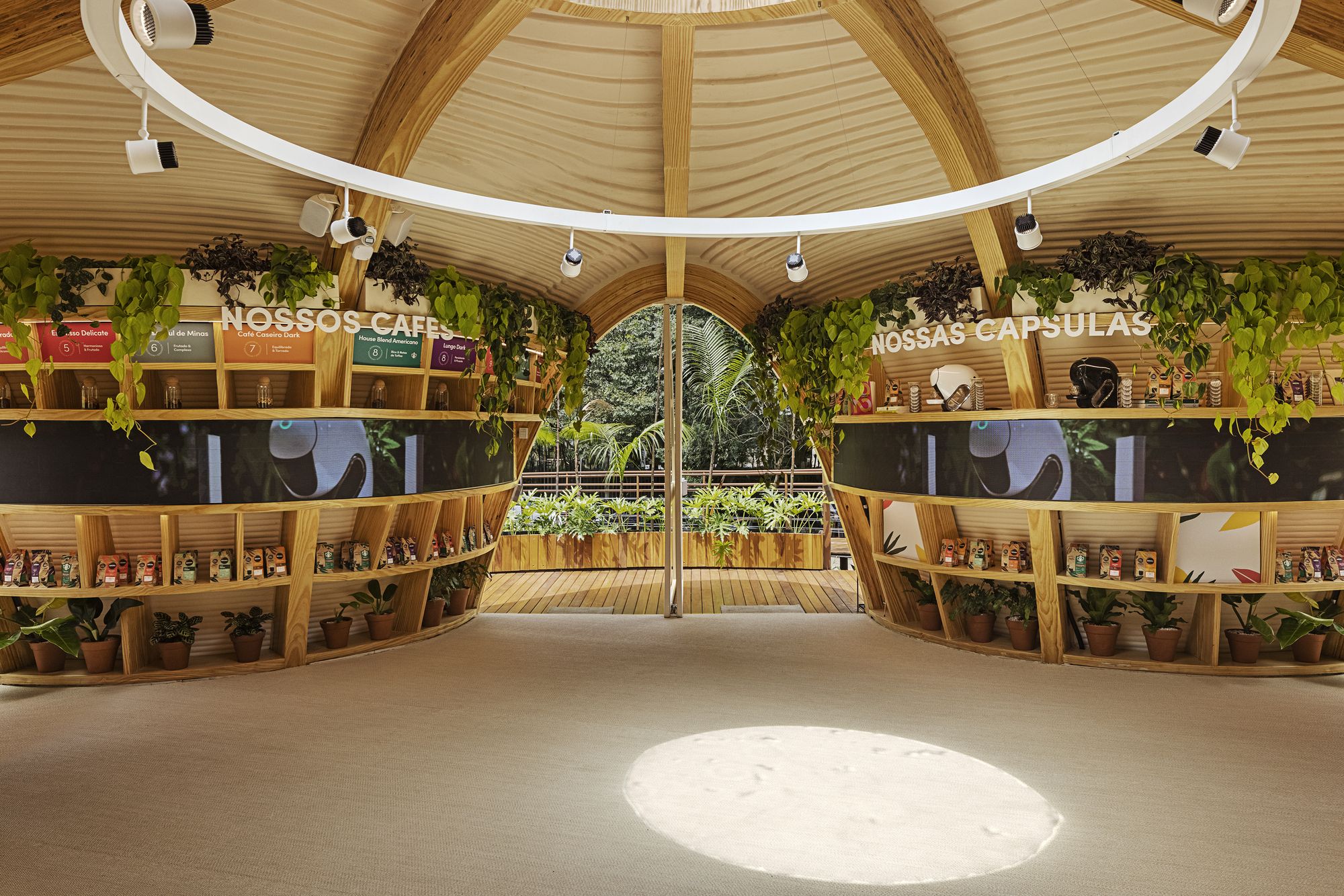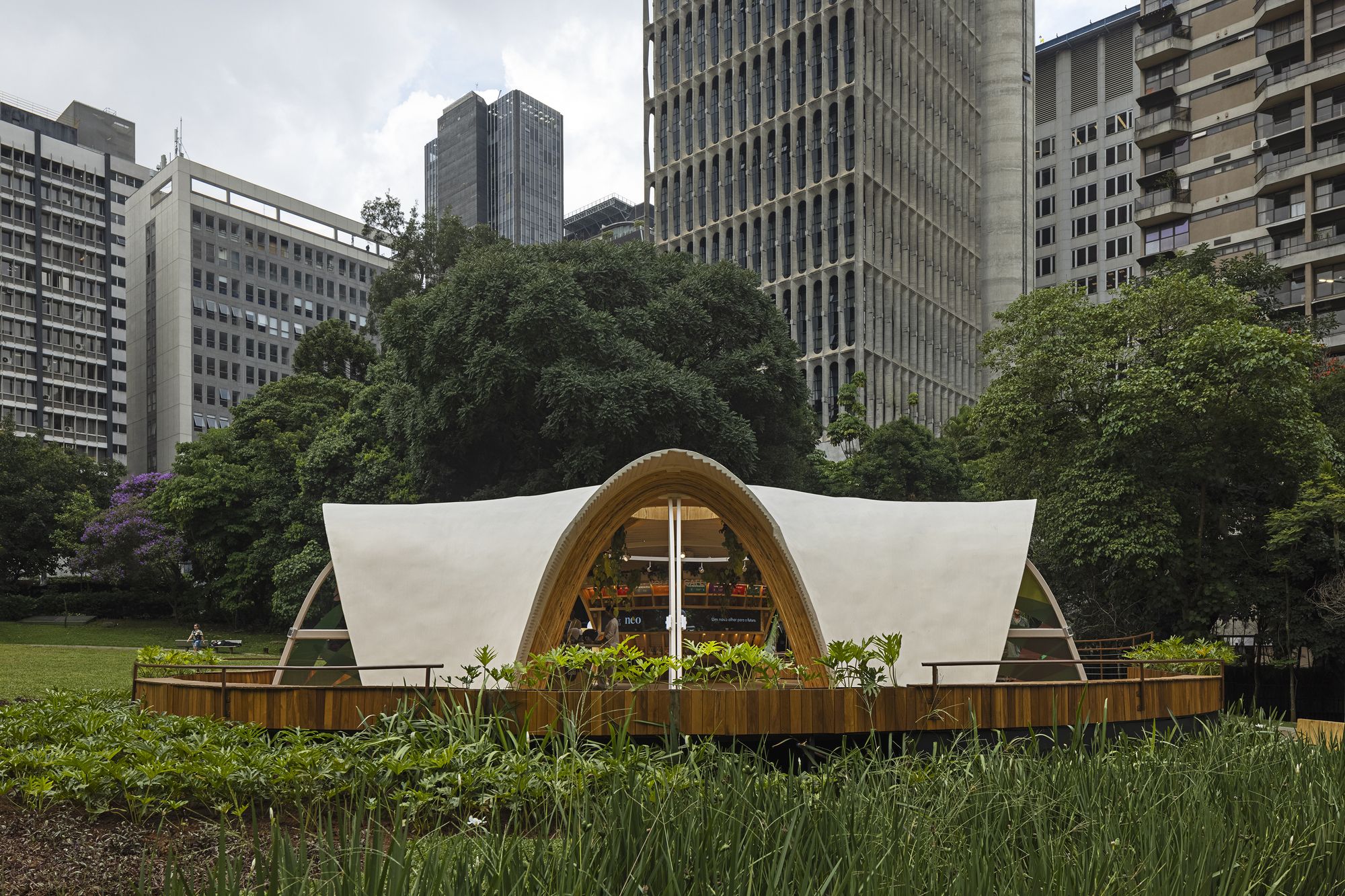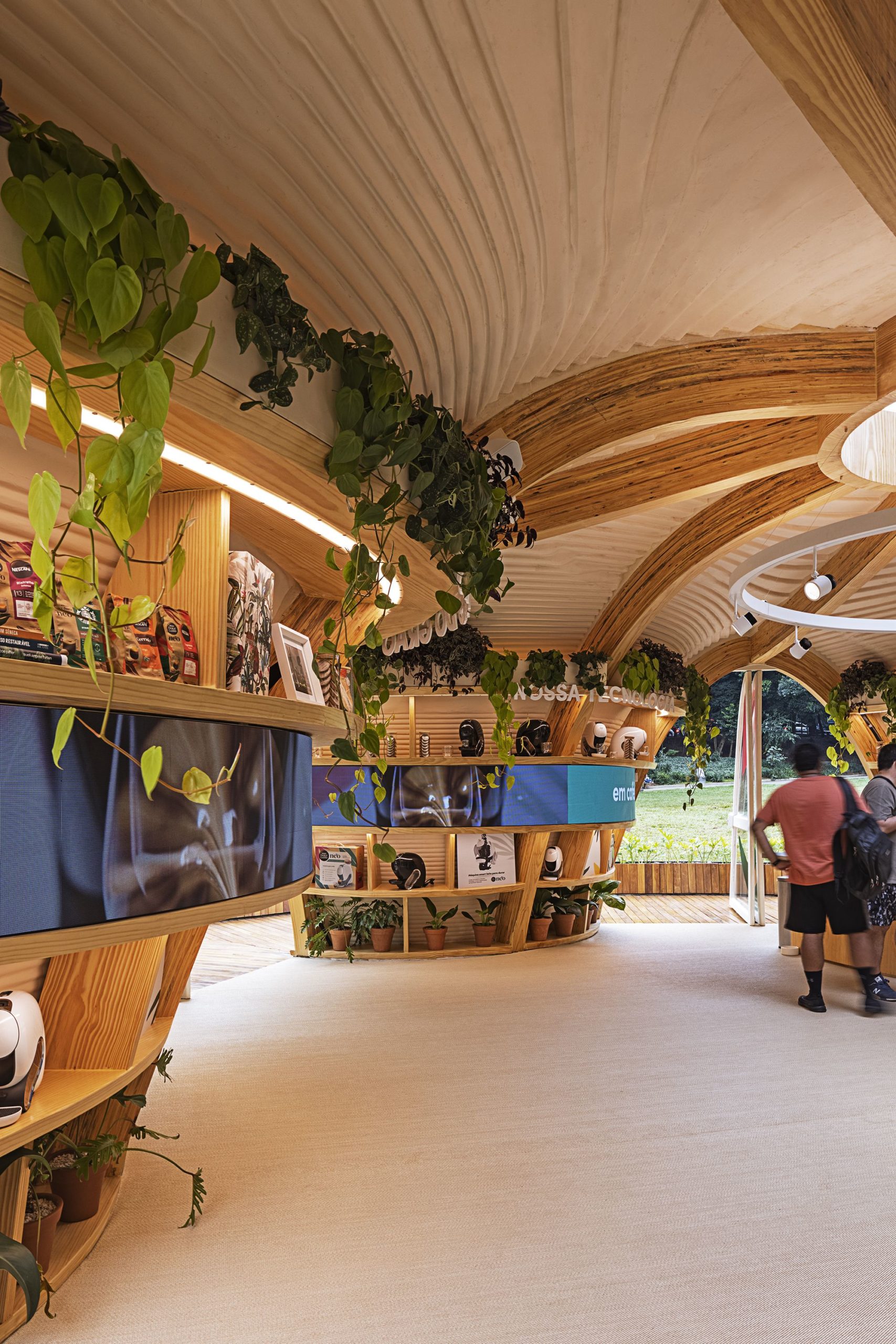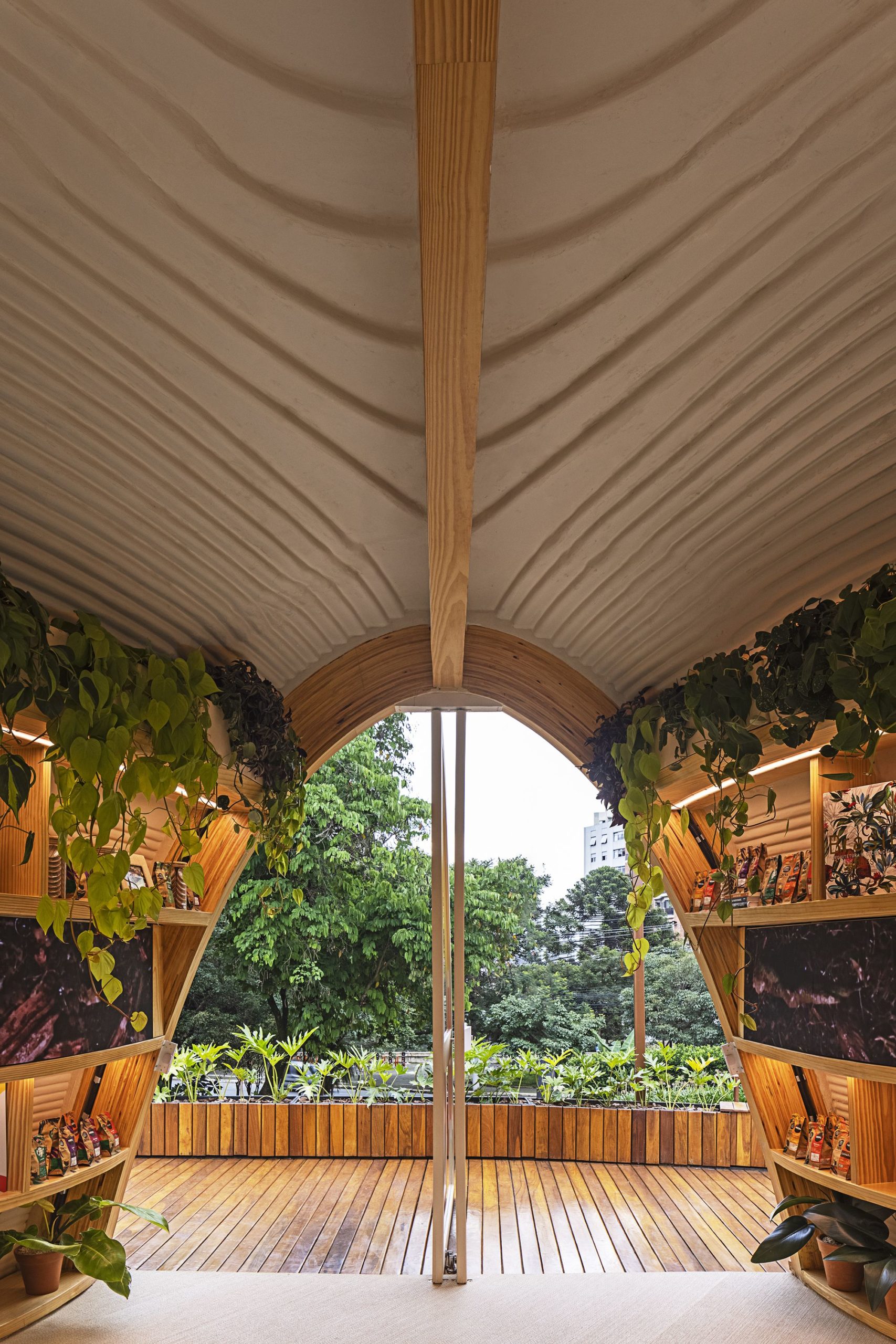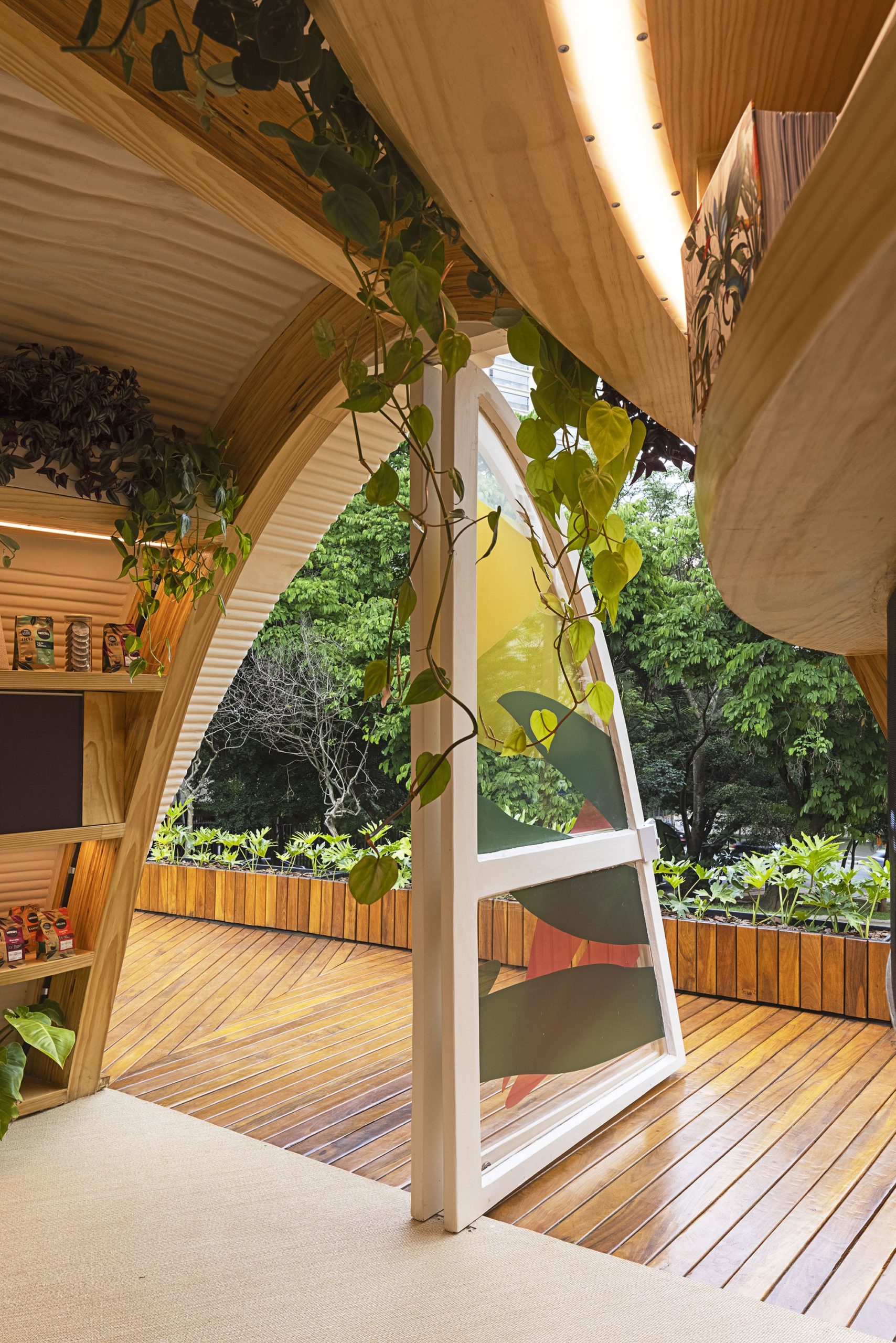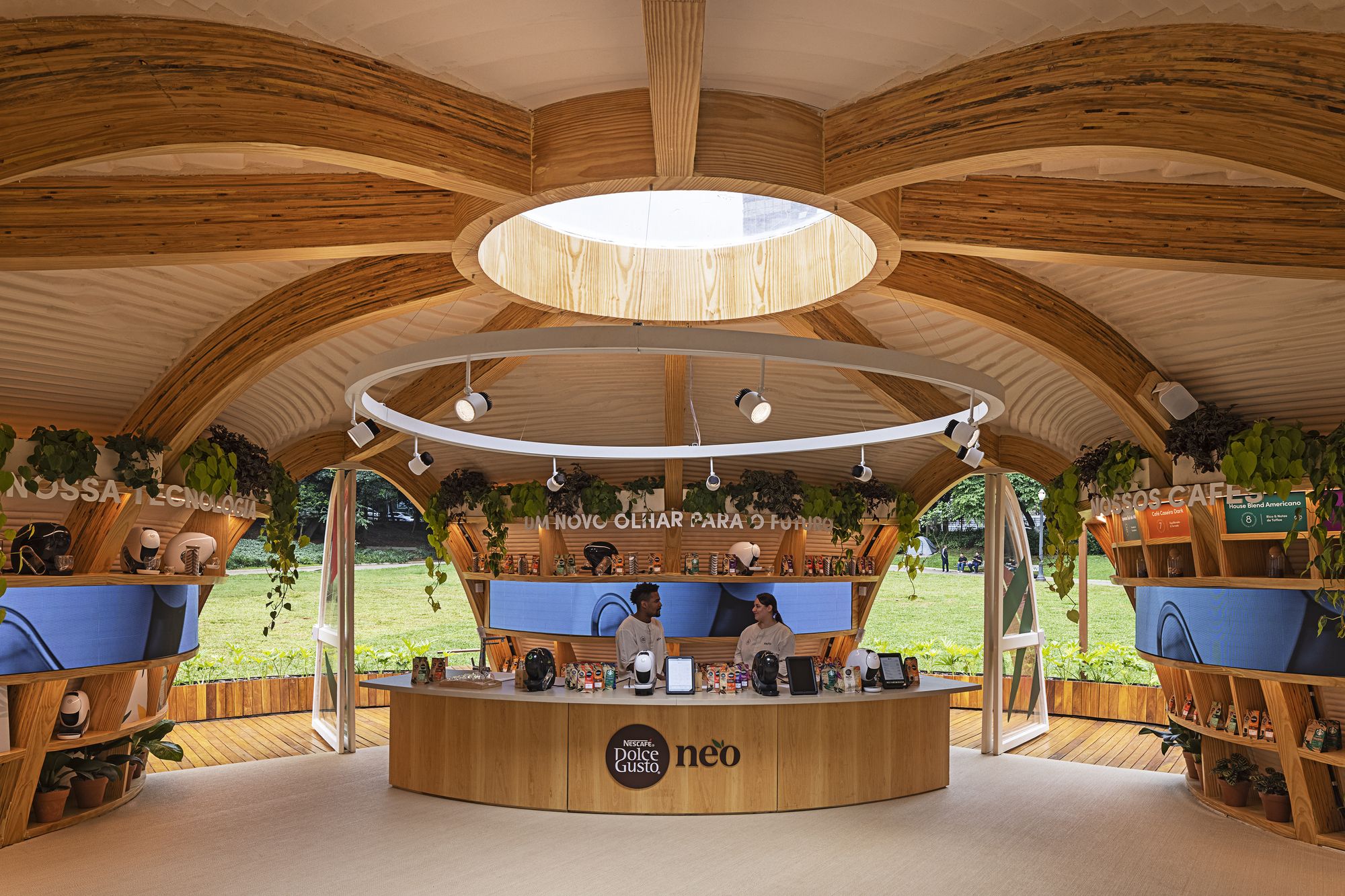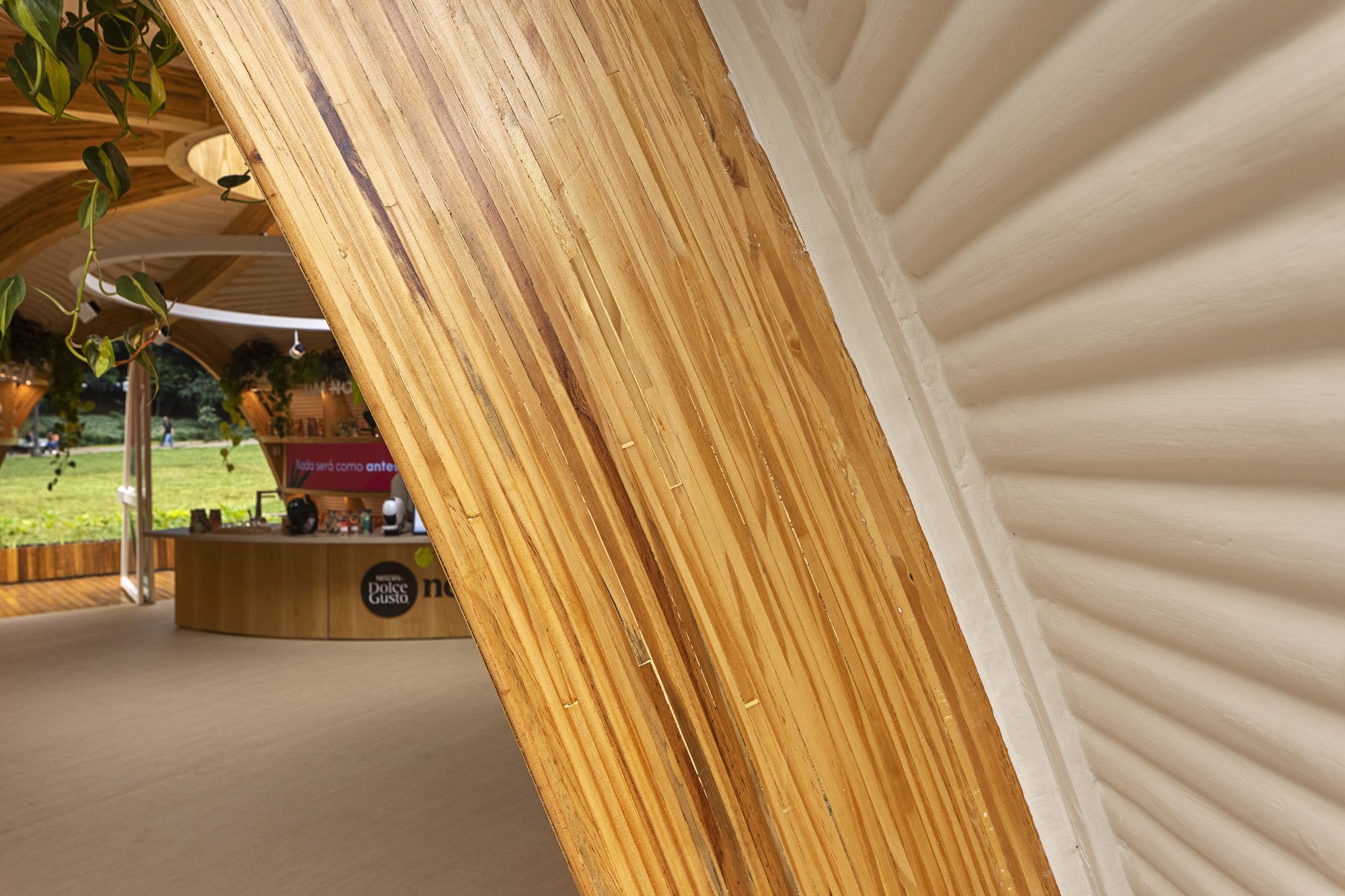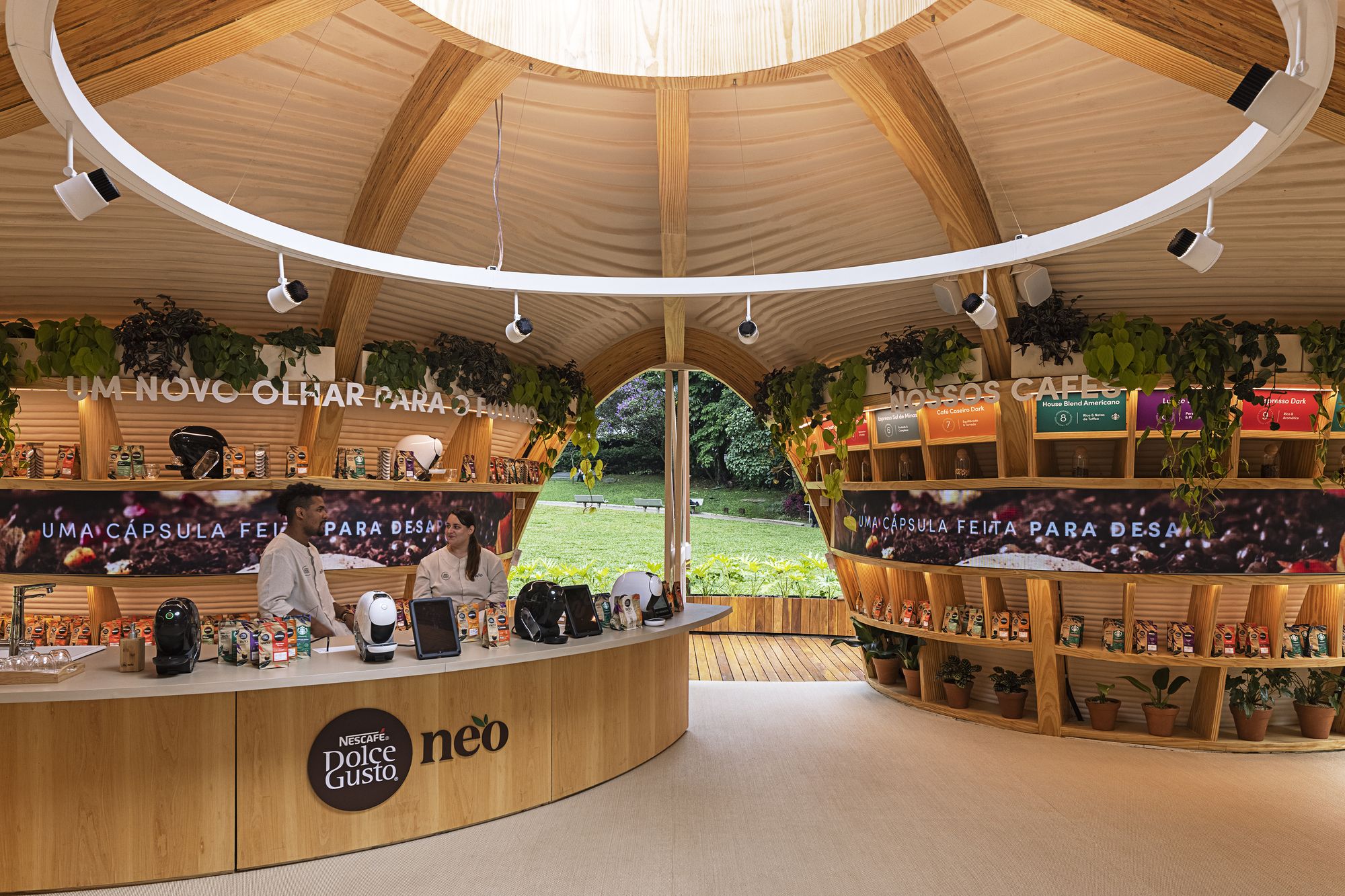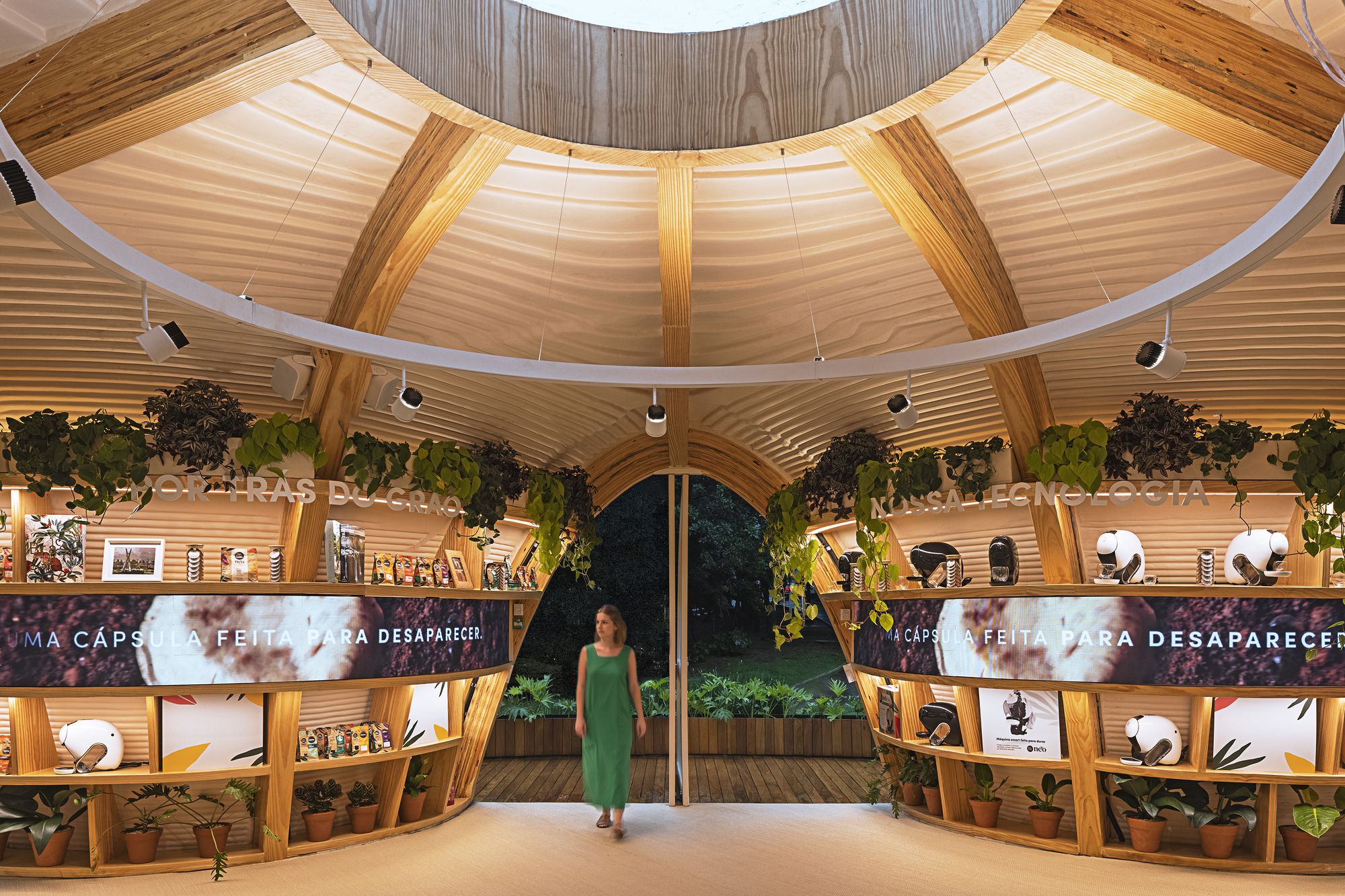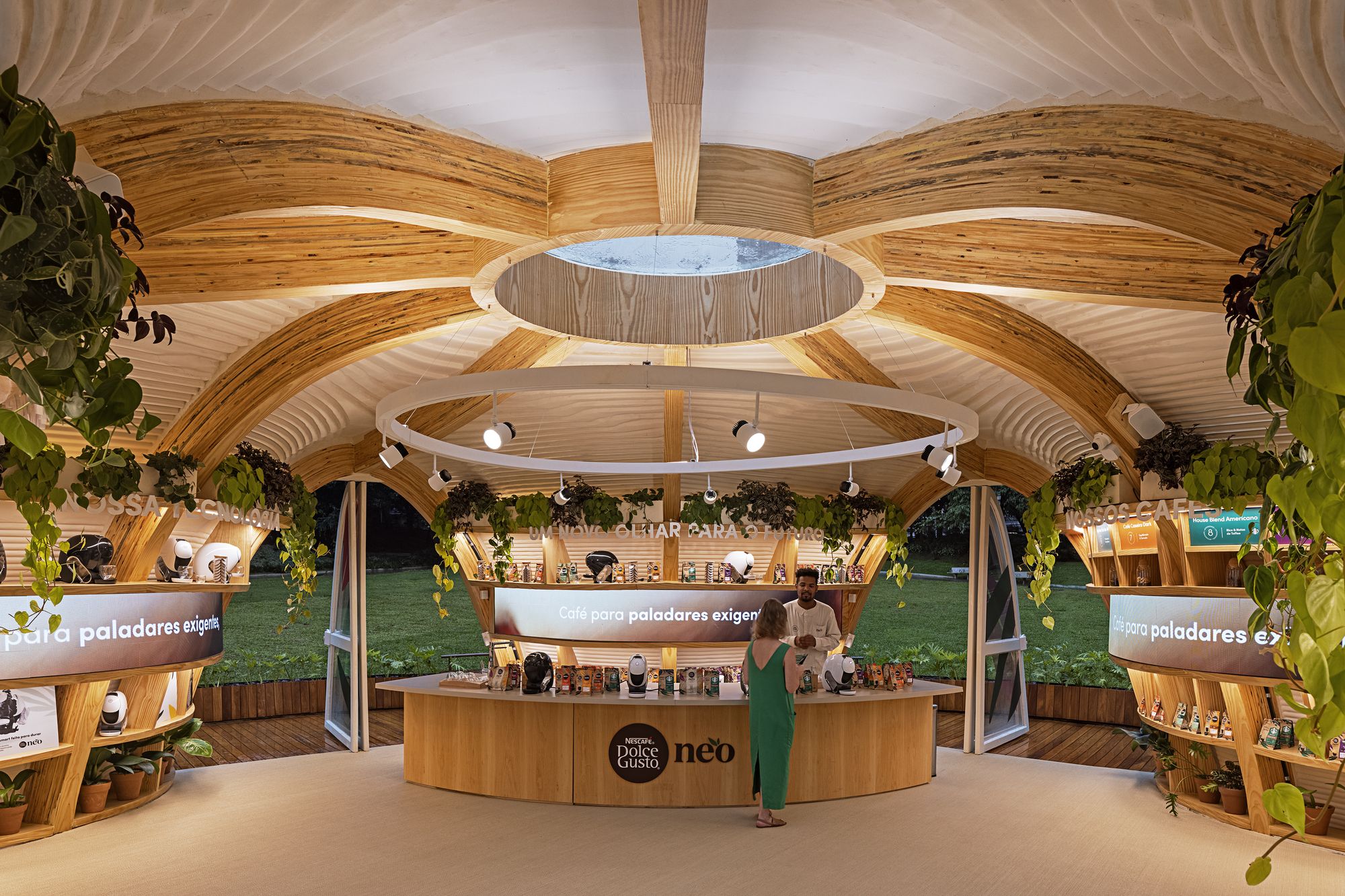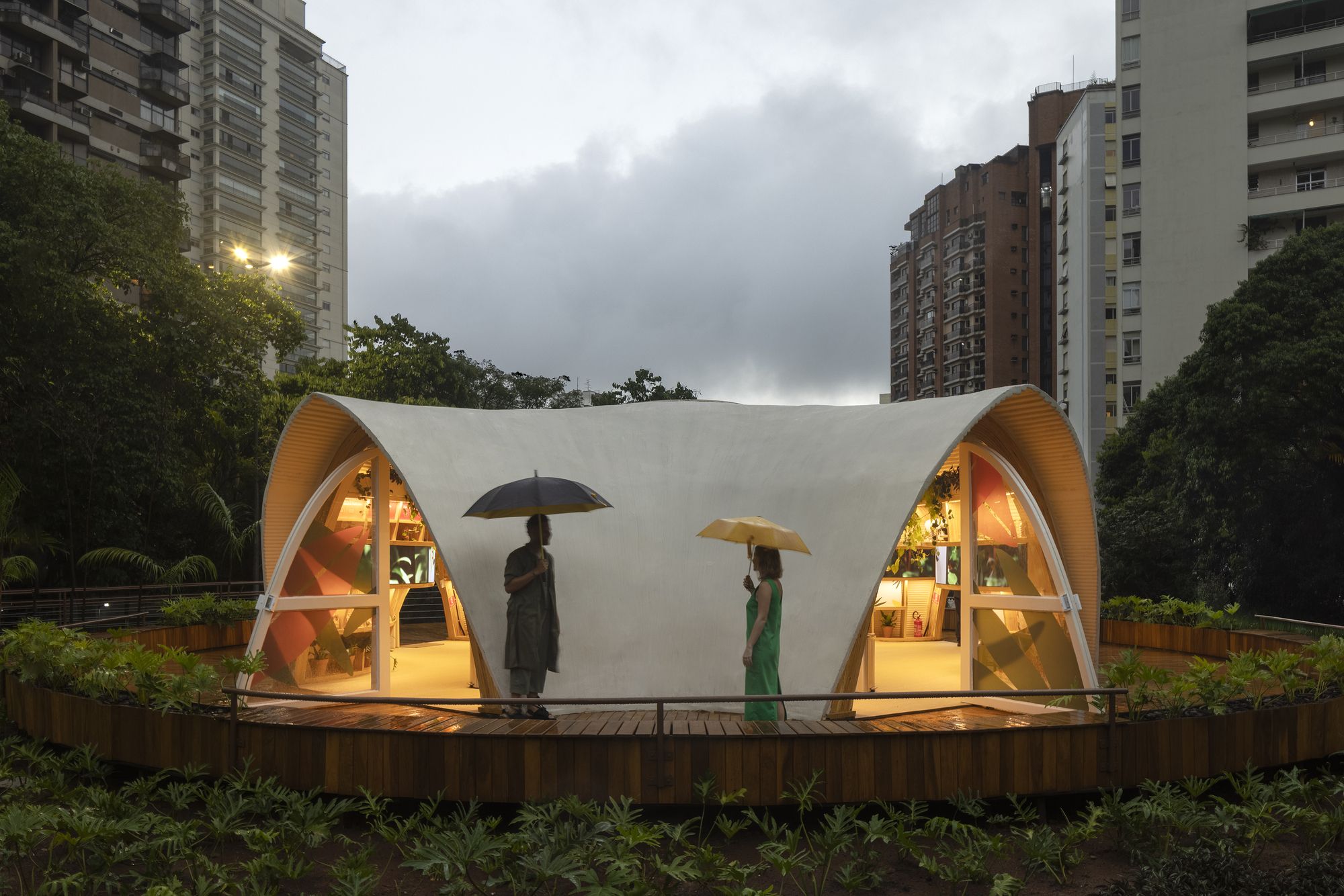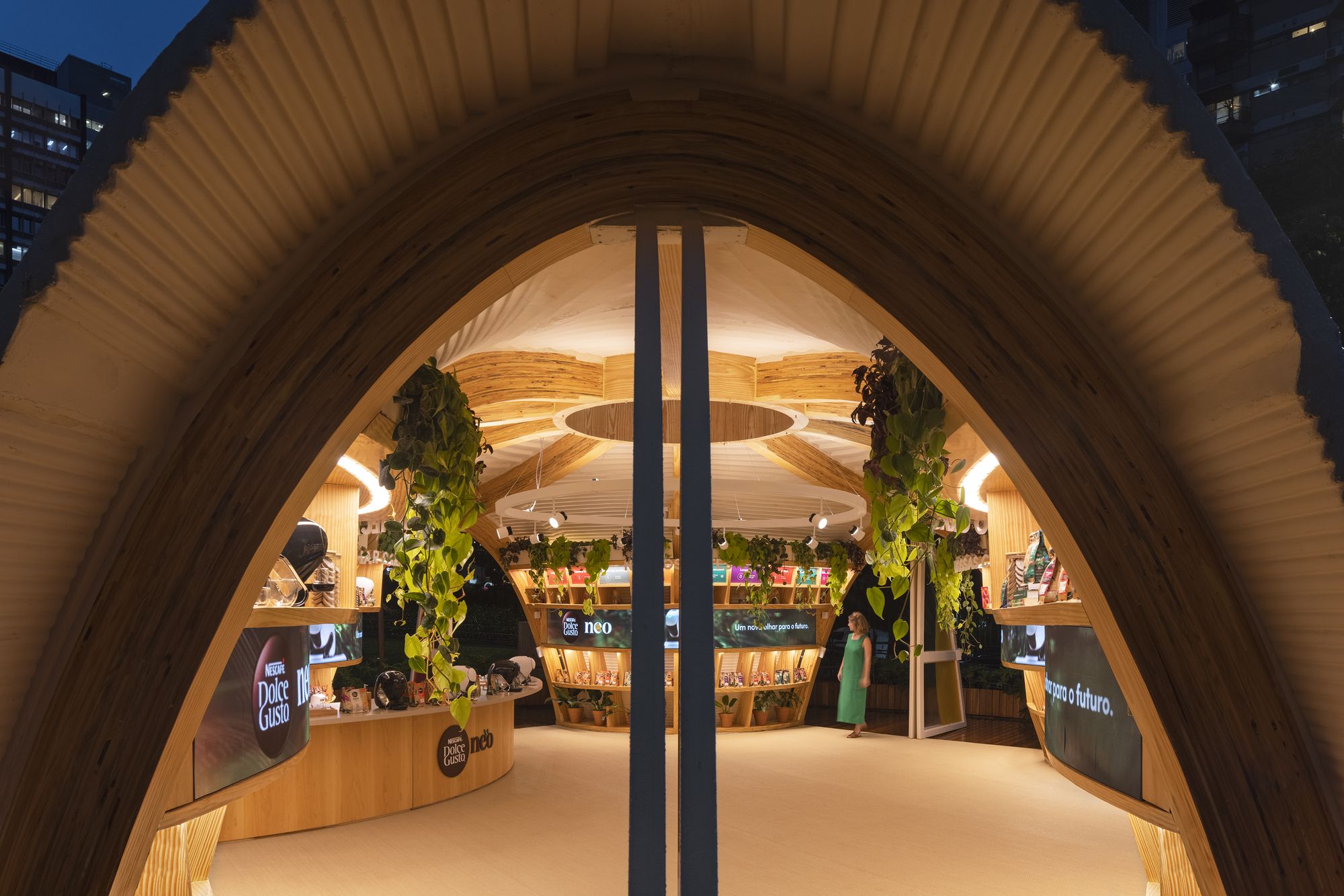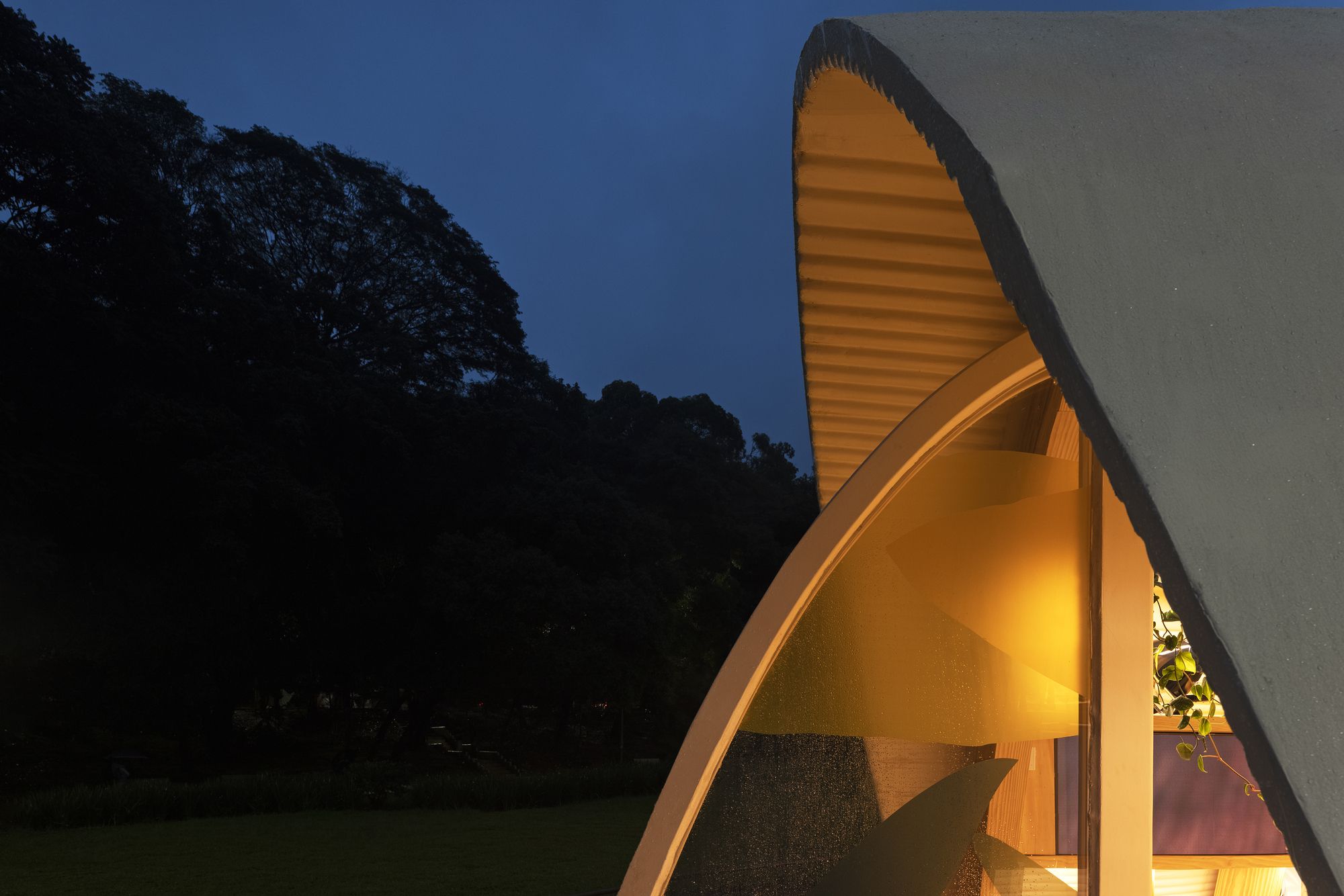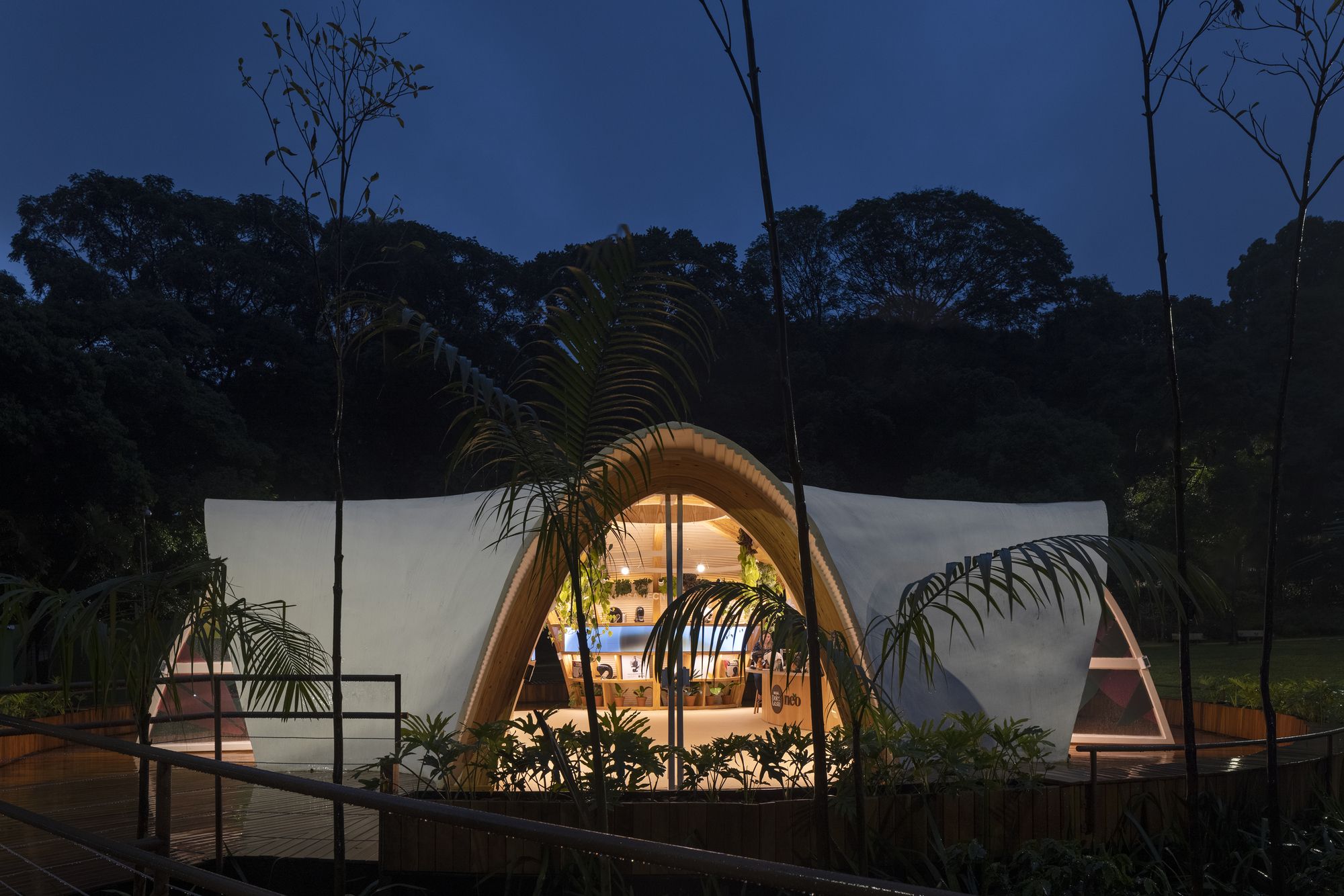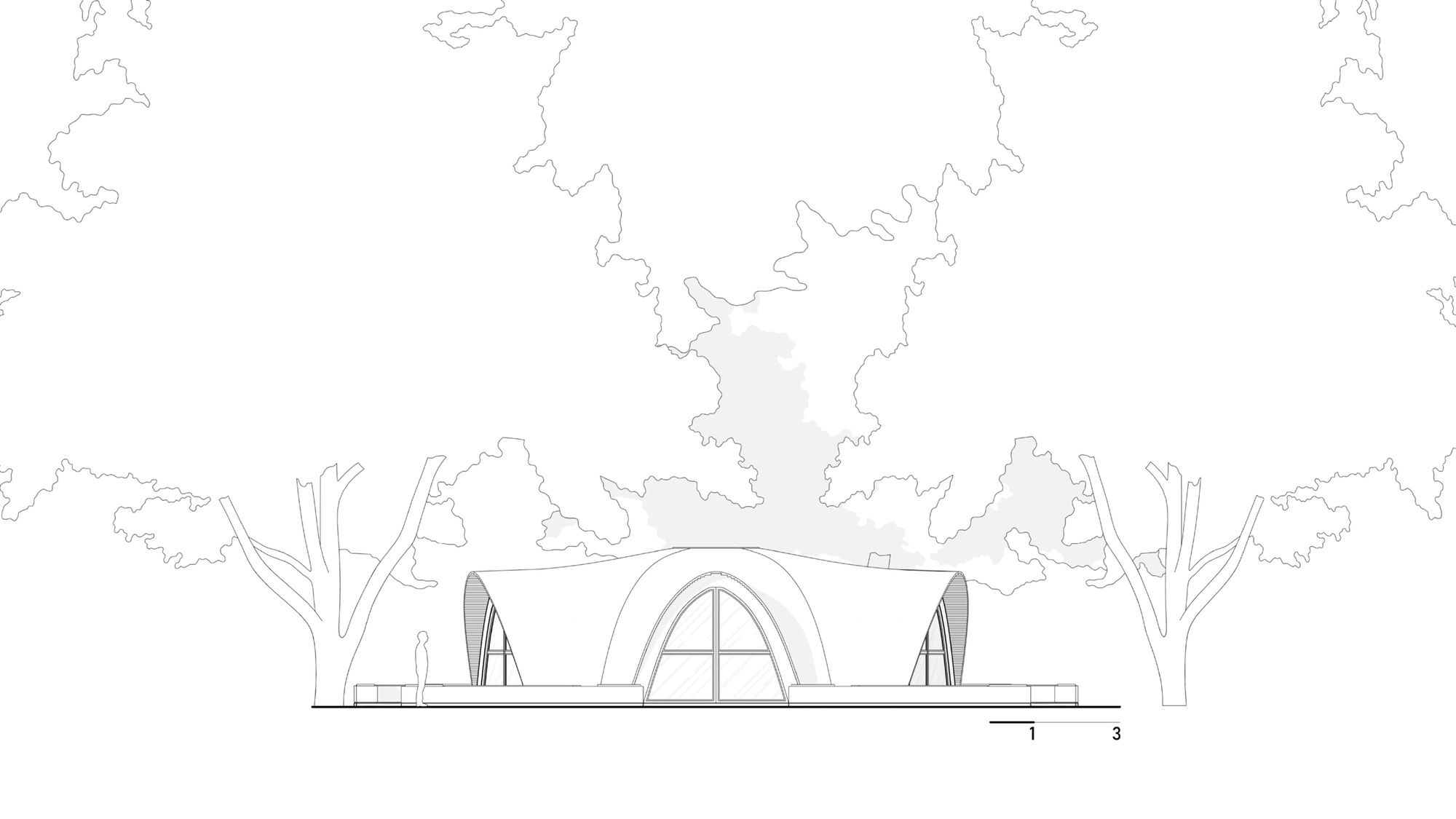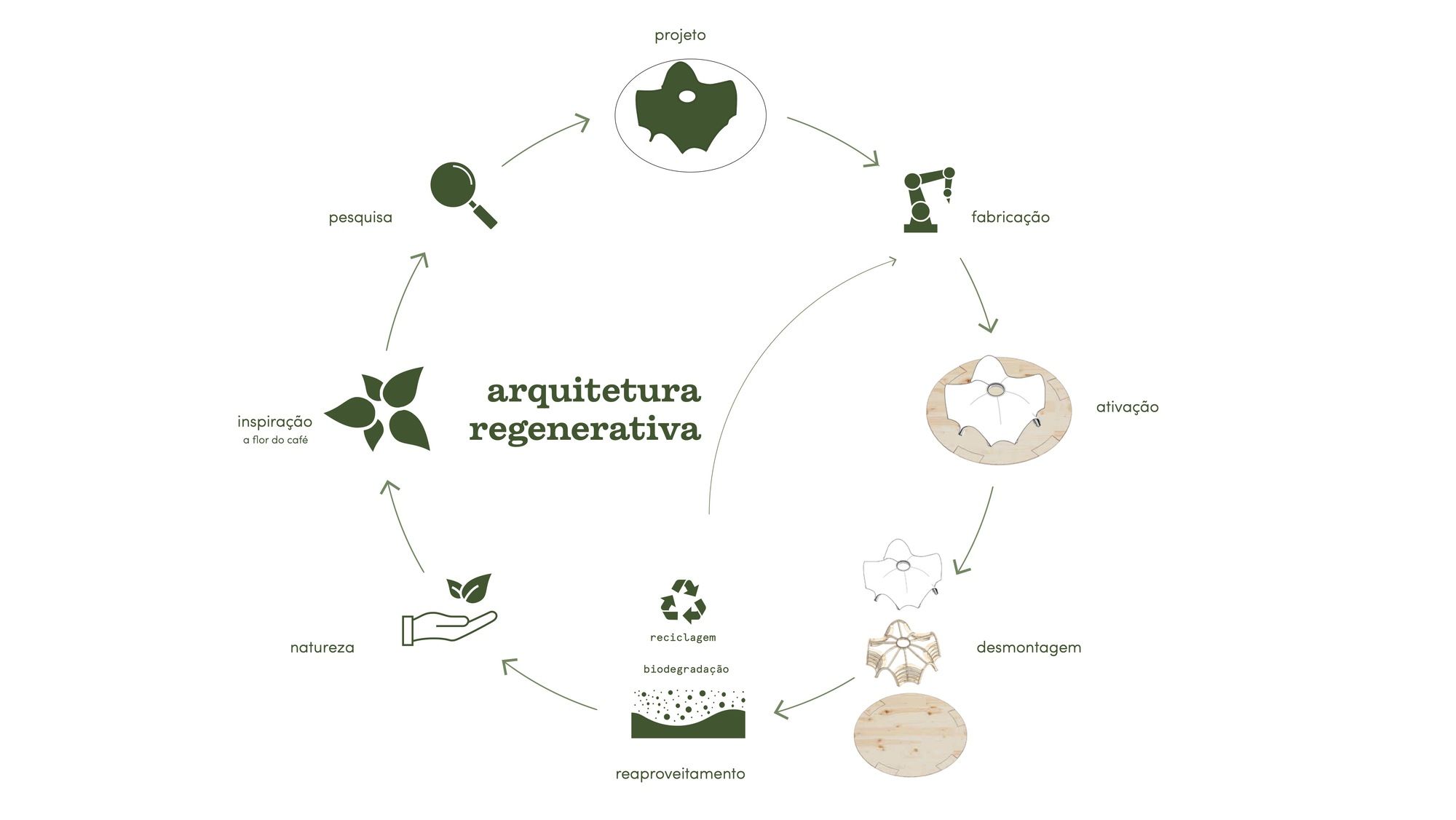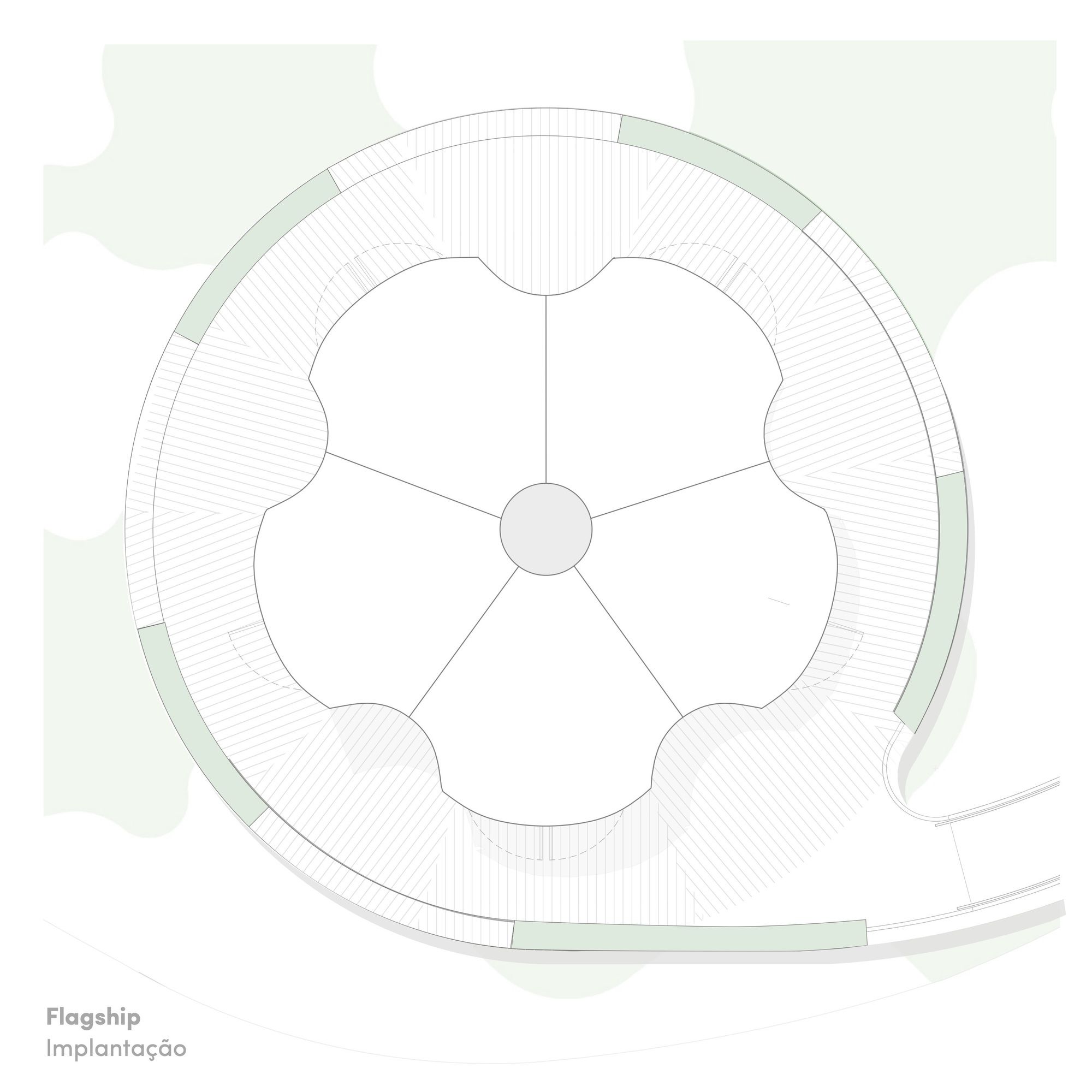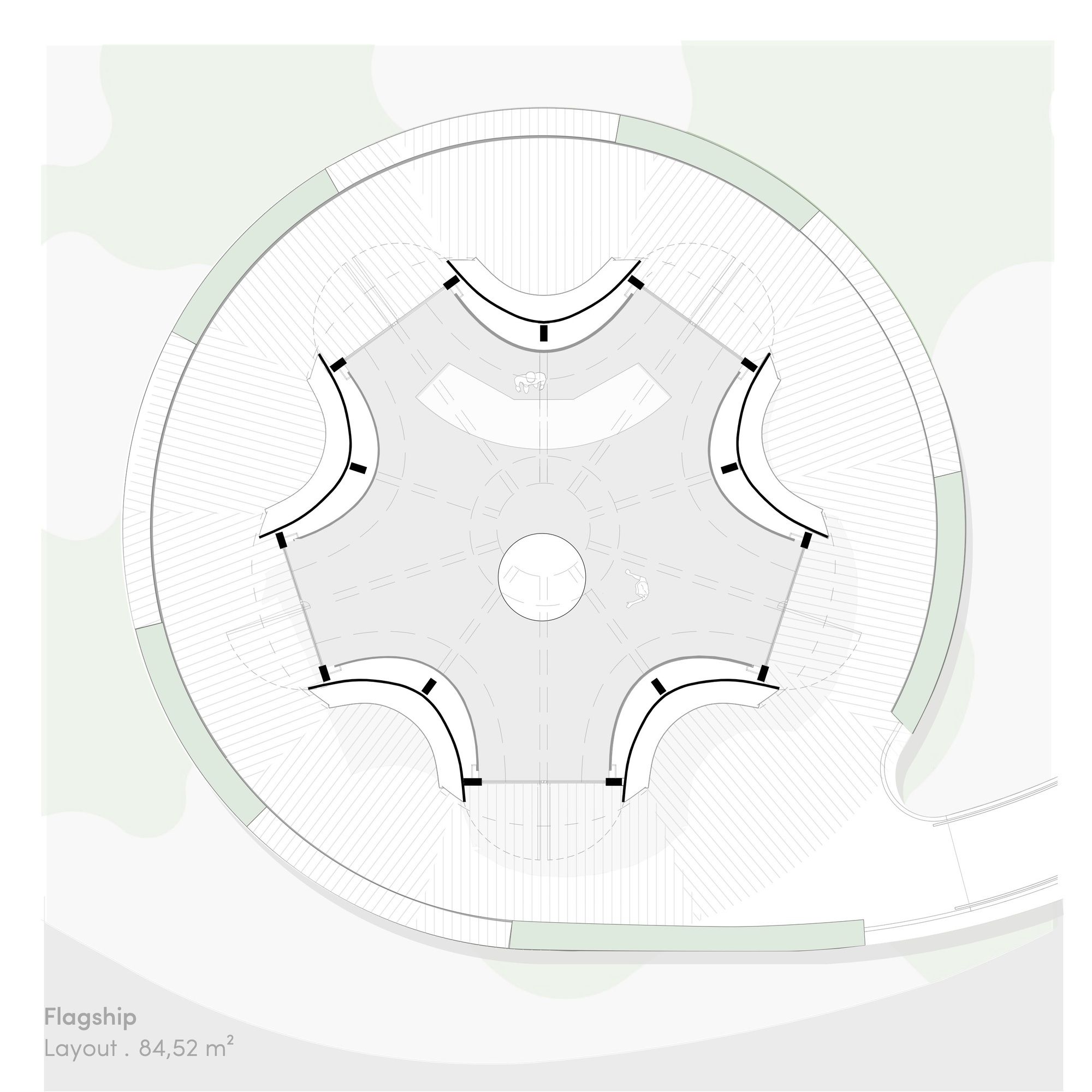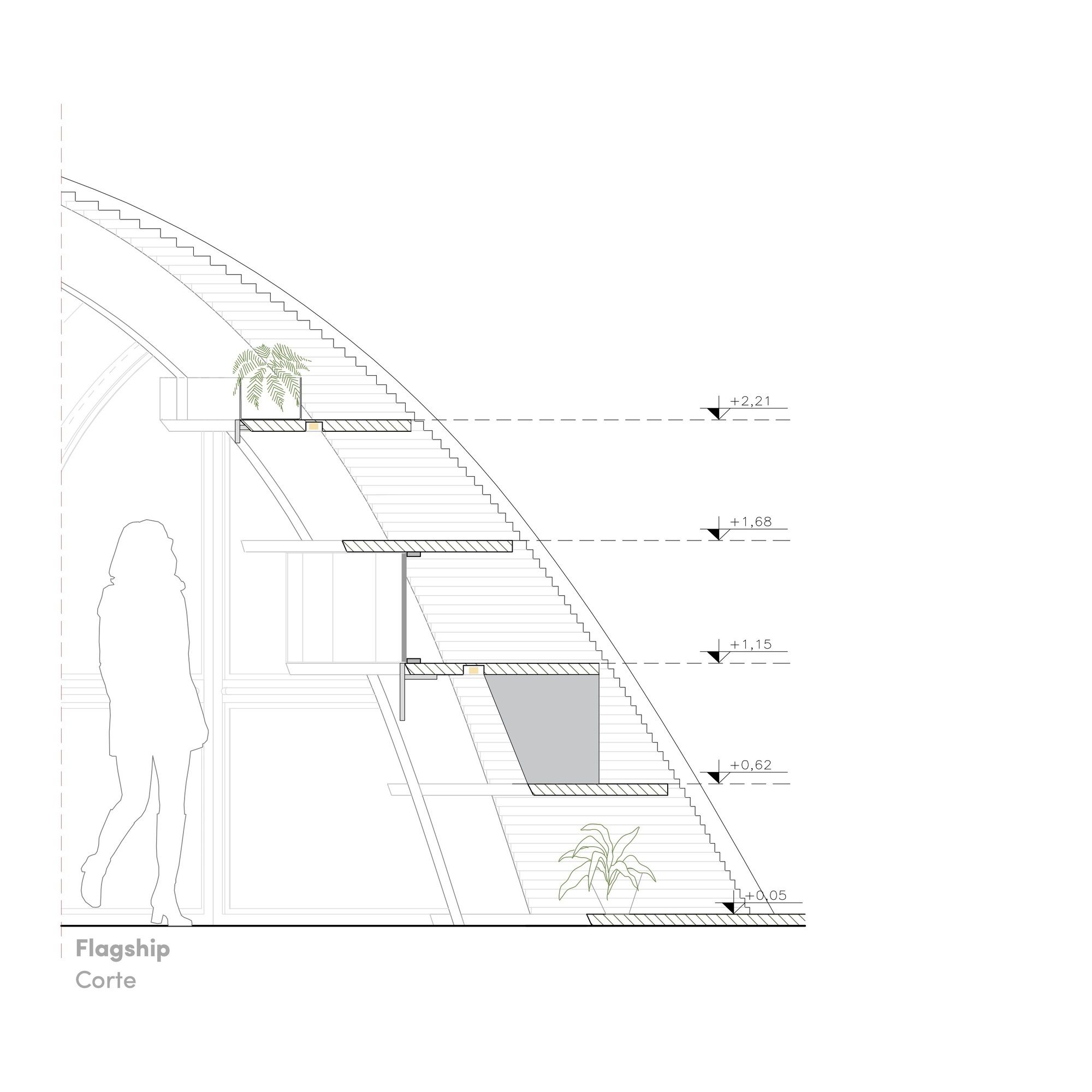Unites innovation, sustainability, and architecture. The building ́s form was generated with algorithms and it was fabricated with the help of 3D-printed in biodegradable materials, making it the first building of its kind in Latin America. The Dolce Gusto Neo Flagship Store was conceived for the launch of the Dolce Gusto Neo which incorporates recycled plastic recovered from the ocean in its machines together with biodegradable capsules. The building architecture invites us to reflect on potential futures that we could design, especially given the climate emergency we are facing. It also regards the alternatives that civil construction so urgently needs to consider so that we can stop using materials from non-renewable and highly polluting sources such as concrete and steel.
The Dolce Gusto Neo Flagship’s Design Concept
Inspired by the delicate coffee flower’s five petals, the Concept Store is designed like a dome formed along five axes, each marked by a glass portico, enabling a structure that has no clear front or rear and thus presents a flowing permeability with 360-degree views of the green space surrounding it. The interiors take advantage of the internal structure, organizing the store’s program and serving as a basis for support and product displays.
Five curved LED panels form a circular feature of digital content that helps visually integrate the axes. A glass skylight lets in sunlight and creates a temple-like atmosphere with a form inspired by nature. The Dolce Gusto Neo flagship was designed to be installed in a public park, to be democratic and accessible, and to display its 3D-printed biodegradable architecture.
The prefabricated structure is composed of glued laminated timber (GLT) made from common reforested pine trees. It is covered with a shell, the molds of which were milled from computer files that minimize their material weight suspended from the optimized structure.
As important as the Flagship is for Dolce Gusto Neo, its layout followed the engineering of the structure. There are two main materials used in its construction: wood and plaster. After the store is dismantled after about two years, the wood will be recycled and the plaster will be crushed and used as agricultural fertilizer, providing the soil with nutrients such as calcium and sulfur. The Dolce Gusto Neo kiosks, to be installed in several shopping malls, follow the same principles as the Concept Store. Their format also references the coffee flower, laid out along five axes, and is made entirely of reforested pine wood. All the wood can be recycled at the end of a kiosk ́s life cycle.
The base was digitally designed using parametric programming in waffle form, a type of modeling employing algorithms to generate a fluid structure together with fittings, and all CNC milled. Every angle attracts the viewer to the products displayed on the counters and on the circular LED screen surrounding the kiosk. Even the wooden sheets were cut in such a way that minimizes waste. circular LED screen surrounding the kiosk. Even the wooden sheets were cut in such a way that minimizes waste.
Project Info:
Year: 2023
Photographs: Leonardo Finotti
Creative Directors: Guto Requena e Rodolfo Torres
Operations: Ludovica Leone
Project Management: Camila Gonçalves
Communication: Thalissa Bechelli
Architecture: Henrique Stabile, Rodolfo Torres, Mateus Fraga e Priscila Almeida
Client: Nestlé
Construction Company: 4Constru
Management: CTE
Lighting Design: Foco Luz & Desenho
Landscape Desgin: Juliana Freitas Paisagismo
Installations: RGK
Automation: Bettoni Automação e Segurança
Accessibility: Elisa Prado
Fire Consultants: Engepoint
Sustainability Consulting: MateriaLAB
Graphic Design: BFerraz
City: São Paulo
Country: Brazil
© Leonardo Finotti
© Leonardo Finotti
© Leonardo Finotti
© Leonardo Finotti
© Leonardo Finotti
© Leonardo Finotti
© Leonardo Finotti
© Leonardo Finotti
© Leonardo Finotti
© Leonardo Finotti
© Leonardo Finotti
© Leonardo Finotti
© Leonardo Finotti
© Leonardo Finotti
© Leonardo Finotti
© Leonardo Finotti
© Leonardo Finotti
© Leonardo Finotti
© Leonardo Finotti
Elevation
Diagram
Site plan
Layout
Section




